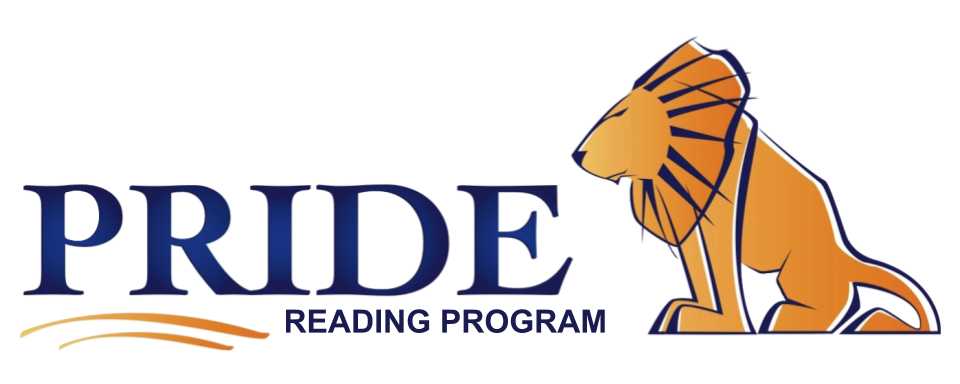
by PRIDE Reading Program Admin | Mar 5, 2017 | A PRIDE Post, Reading Disability
Many students require extra help in reading. When evaluating remedial reading programs for your child, be aware that not all programs are effective and many can be a waste of time. I made a list of 5 important questions to ask before enrolling your child in this extra reading help.
1. Will the reading help my child receives be provided by a trained teacher, paraprofessional or a parent volunteer?
In many schools parents are trained to work as parent volunteers and aids to help the students who are struggling. If your child has been diagnosed with a learning disability, or you suspect a more severe issue than the school is acknowledging, then you will probably want to decline any reading help that is not from a highly trained reading therapist or reading specialist. A child with true learning difficulties will need instruction delivered by an experienced expert using an effective method for sufficient time for the child to catch up to grade level.
2. What specific reading help will my child be receiving?
A child with a reading disability will need a multisensory, systematic, very structured and cumulative reading program with direct and explicit instruction in phonemic awareness and followed by synthetic and analytic phonics with lots of repetition and practice. It will need to integrate the teaching of listening, speaking, reading, spelling, vocabulary, fluency, handwriting, and written expression. Also, remedial programs differ from “mainstream” programs in the extent to which phonology and language structure are explicitly taught. For best results, avoid reading help that teaches your child the material in the same way he or she was taught the first time around. That didn’t work. Also avoid programs that allow too many kids in the group. The idea is that your child needs more individualized attention.
3. What kind of training in this reading help does the teacher delivering the instructions have?
Although the choice of reading program is important, the expertise and training of the teacher are even more critical. Attendance at a 2 day workshop is probably enough to gain an overview of an approach, but to be truly competent at using this approach, a teacher or therapist should have completed at least 20 – 30 hours of training as well as plenty of experience teaching the program.
4. What will my child miss in the classroom while he gets this reading help?
Being pulled out of class can be challenging for students, especially in the middle school years, since they might have to make up material that they miss in class and might receive lower grades in subjects in which they normally do well.
5. Can I come and watch a session?
Check out the teacher, the program and the other students. See if this is the right fit for your child and if the reading help is working and delivering results.
Learn more about the New PRIDE Reading Program
___________________________________________________________________________________________________________________________________
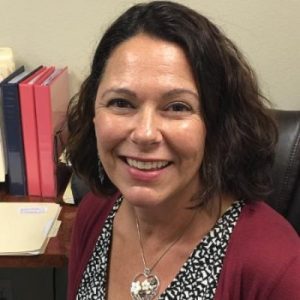
Karina Richland, M.A. is the Founder and Director of PRIDE Learning Centers, located in Southern California. Ms. Richland is a certified reading and learning disability specialist. Ms. Richland speaks frequently to parents, teachers, and professionals on learning differences, and writes for several journals and publications. You can visit the PRIDE Learning Center website at: www.pridelearningcenter.com
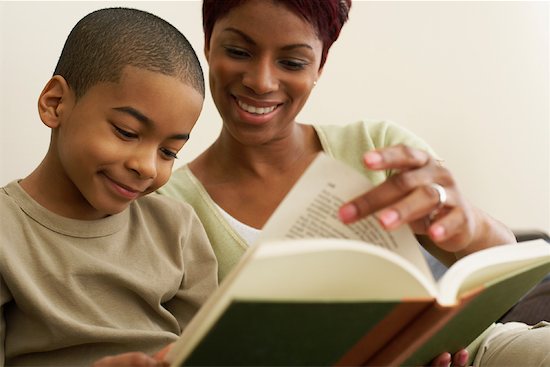
by PRIDE Reading Program Admin | Dec 6, 2015 | A PRIDE Post, Reading Fluency
Do you watch your child struggle to read a book that you feel is just perfect for their age and reading level? Is the reading choppy and slow?
Reading fluency is the process where a child reads aloud expressively and with understanding. When a child reads fluently, the words flow smoothly and at an efficient pace. Reading fluency is a critical component in the reading process. Stumbling and hesitating over words undermines reading comprehension given that by the time the child gets to the end of a sentence he or she will have completely forgotten what was at the beginning of the sentence!
How do you measure reading fluency in your child?
- Ask the child to read a grade level passage that they have never seen or read before.
- Using a timer have the child read this text for one minute.
- While reading the passage, tally the errors the child makes while reading.
- Stop the child after one minute. Count the number of words read in the minute and subtract any errors made by the child. For example: if he or she read 120 words in a minute and made five errors then the child’s reading fluency rate is 115.
- Use the chart below to determine if your child’s reading rate is on target.
Mean Words Correct Per Minute “Targets” for Average Students in Grades One through Eight
| Grade | Fall Target | Winter Target | Spring Target |
| | | | |
| 1 | Not applicable | 20 | 50 |
| 2 | 50 | 70 | 90 |
| 3 | 70 | 90 | 110 |
| 4 | 95 | 110 | 125 |
| 5 | 110 | 125 | 140 |
| 6 | 125 | 140 | 150 |
| 7 | 125 | 140 | 150 |
| 8 | 130 | 140 | 150 |
Johns, J. and Berglund, R. (2006). Fluency strategies and assessments. Dubuque, IA: Kendall/Hunt Publishers.
How do you determine a child’s reading level to test for fluency?
Probably the easiest ways to determine if a book is at an appropriate reading level for your child is the Five Finger Rule. Have the child begin reading a chapter, and put down one finger each time he struggles with a word. If they reach the end of the page before you get to five fingers, the book is written at a comfortable level for independent reading.
What can you do to increase and improve your child’s reading fluency?
The very best way is through practice, both through oral and silent reading.
One approach to practicing reading fluency is for the child to repeatedly read the same passage or text either with a parent or teacher three to four times. Rereading text gives the child multiple opportunities to read unfamiliar words. After repeated reading, those words become familiar. The child should practice rereading aloud texts that are reasonably easy for them and at their reading level and include words that the child already knows and can decode easily. A text is considered at reading level if the child can read it with 95% accuracy. This text should also be relatively short consisting of 50-200 words. First, the parent or teacher reads the text aloud to the child. Then the child reads the same passage to the adult or chorally with the adult. Finally, the child rereads the passage again independently.
Reading frequently will also improve reading fluency since reading is a skill that improves with practice. Children can improve their reading fluency by reading independently each day for at least 20 minutes. Again it is important that the child read a book or text that is at their grade level or slightly below their grade level. Children should be encouraged and allowed to read a book of their choice – even if this doesn’t involve classic novels for their independent reading. For gaining fluency, quantity is more important than quality. Whenever possible, use their interests to guide their reading choices and give them some power in making decisions about what to read.
Memorizing Dolch sight words is another method to improve reading fluency in children. By memorizing common words like “the”, “said”, “what”, “you”, the child will read texts and stories more fluently. Many of these words are in almost anything they read. Readers will have more experiences of success if they know these words. Dolch words are service words; they give meaning and direction, which are necessary for understanding sentences.
Model good reading for your children. Share what you read with them or read what they are reading. Have discussions and talk to them about the things you find important in what you read and why. Parents and teachers need to read themselves and read in front of their children and students. Children will imitate you and will be more likely to read and read well in a house and classroom filled with all kinds of interesting books, magazines and texts.
_______________________________________________________________________________________________________
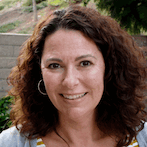
Karina Richland, M.A. is the Founder of Pride Learning Centers, located in Los Angeles and Orange County. Ms. Richland is a certified reading and learning disability specialist. Ms. Richland speaks frequently to parents, teachers, and professionals on learning differences, and writes for several journals and publications. You can visit the PRIDE Learning Center website at: www.pridelearningcenter.com
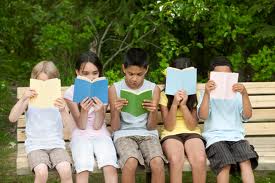
by PRIDE Reading Program Admin | Apr 26, 2012 | A PRIDE Post, Summer Programs
As the school year ends, many students are busy during the summer months with camps, play dates, recreational activities and vacations. Some students might even be bored during the long summer months. When summer ends, students go back to school and often forget much of what they learned the previous year. This is what we call the summer learning loss.
Studies show that summer loss for all students equals about a month of academic learning. For students with learning disabilities, this loss may amount to as much as 3 months! Weaknesses in memory, processing speed, attention and language cause valuable skills to weaken rapidly. As a result, students will have to spend more time reviewing at the beginning of each school year in order to catch up.
Continuing instruction during the summer months can help greatly reduce learning loss as well as gives students the opportunities to dedicate more time than is possible during the school year to remediate and get ahead. Students can make amazing progress during these long summer months!
Pride Learning Center offers Reading and Writing Summer Programs for students of all ages. We offer an intensive Orton-Gillingham reading and writing program (3 hours M-F), as well as standard sessions (1 hour once or twice a week) between June and August.
Summer Catch – Up Program
Do in 4 weeks what would normally take 30-40 weeks!
Our Pride Intensive offers the most dramatic results. Our reading specialists will provide the needed support to get students at grade level during the long summer months. Your child still gets a summer break, as sessions are typically only 3 hours a day five days a week depending on family choice and goals established at the initial consultation. There are still plenty of hours in the day to play, go to the beach or just relax.
Sample Daily Schedule:
9:00 – 10:00 Orton-Gillingham Reading Instruction
10:00 – 10:30 Technology Based Reading Instruction
10:30 – 11:00 Snack, Fun and Movement
11:00 – 11:30 Writing Instruction
11:30 – 12:00 Orton-Gillingham reading Instruction
Summer Get-Ahead Program
Summer is such a great time to review material and get ahead on next year’s curriculum! We offer programs in reading, writing, spelling and comprehension for those students who want to attend Pride once or twice a week.
Reading Readiness at Pride Learning Center
Pre-K – Kindergarten
Pride’s early intervention program will teach your child to read and get ahead in school. By working through our multisensory, Orton-Gillingham reading program step-by-step, your child will learn alphabetic knowledge and understanding of the alphabetic principles in a fun yet structured environment. Your child will receive a strong and solid reading foundation that will last a lifetime.
Reading and Spelling at Pride Learning Center
Grade K – Grade 8
Pride’s multisensory, Orton-Gillingham reading and spelling program is action oriented and involves constant interaction between our Reading Specialists and your child. Each student at Pride learns to read in a systematic, cumulative, structured and step-by-step process. Each lesson encompasses the skills of decoding, encoding, fluency and reading comprehension. Your child will become a strong and independent reader.
Reading Comprehension
Grade 2 – Grade 12
Pride’s highly successful research-based Reading Comprehension Program teaches students to draw meaning from text and to verbally express their understanding of it. Utilizing nonfiction-reading passages on a variety of subjects, the skills that are taught prepare students for standardized tests and provide valuable practice in nonfiction reading knowledge on a wide range of subjects.
Writing Skills
Grade 2 – Grade 12
Pride’s writing skills program effectively teaches essential skills in careful order: from parts of speech, to sentence structure, to paragraphs, to complete essays. For the reluctant beginning writer, our program provides the essential foundation in thinking and writing skills. For the more proficient and advanced writer, it offers opportunities, strategies, and techniques to apply them.
___________________________________________________________________________________________________
Pride Learning Center has locations in Los Angeles, Redondo Beach, Newport Beach and Mission Viejo. For more information visit www.pridelearningcenter.com or call 866-774-3342 ext. 1


